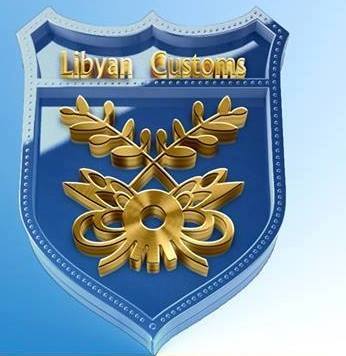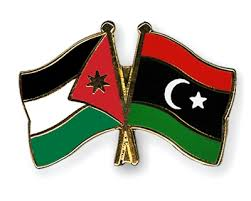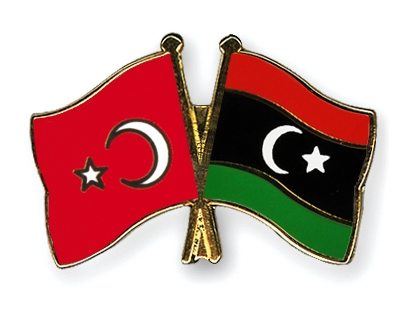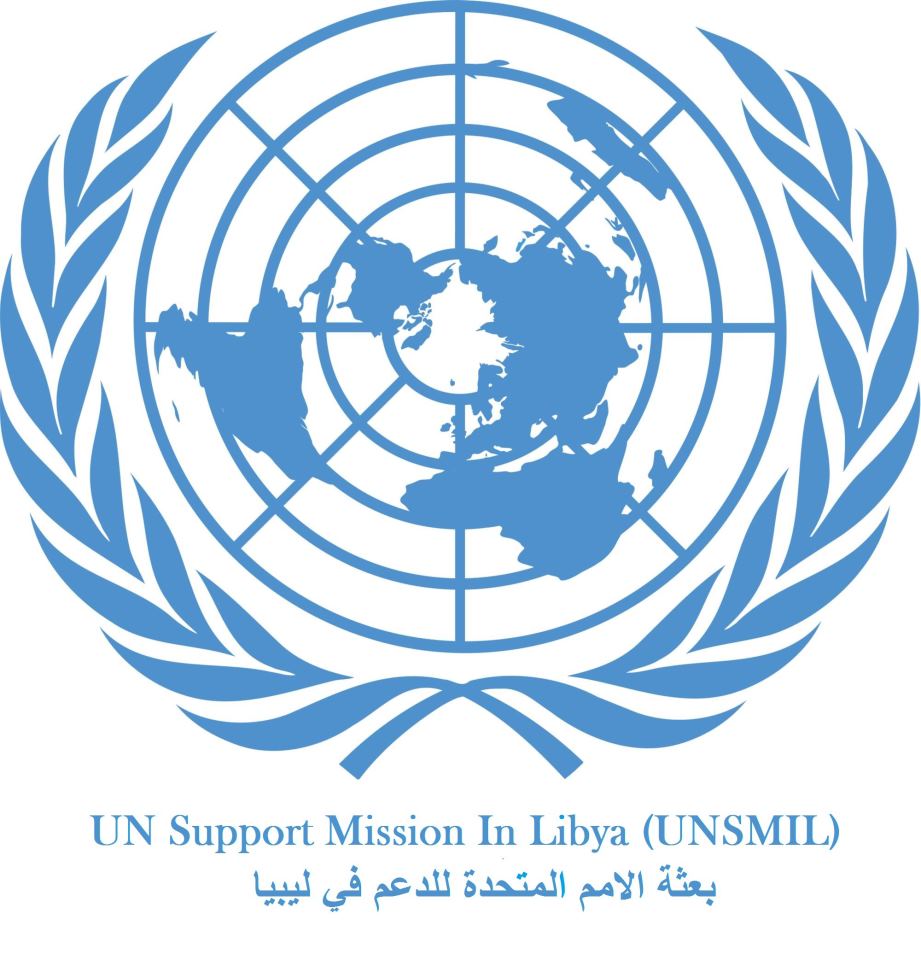By Michel Cousins
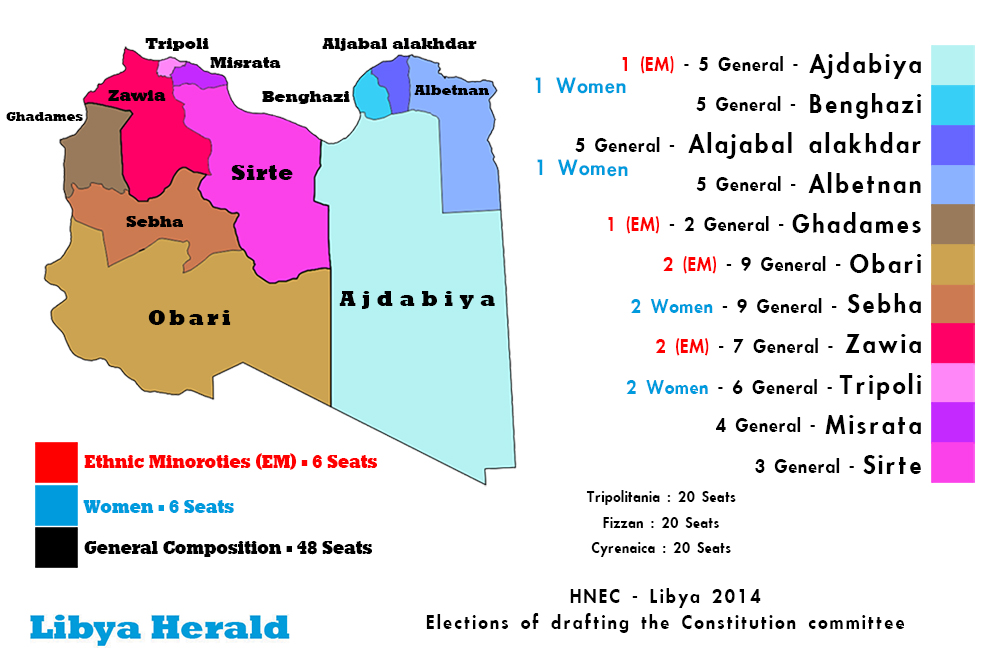
Tripoli, 14 February 2014:
When the voters go to the polls next Thursday to election the 60-member Committee that will . . .[restrict]draft Libya’s new constitution, many may find it anything but a simple affair.
The three historic areas of the country – Tripolitania, Cyrenaica and Fezzan – which will have 20 representatives each, are divided into 11 constituencies and, below them, 47 sub-constituencies. The majority of sub-constituencies will elect just one member to the Constitutional Committee but some will return as many as three. In most, voters will be given a simple ballot form with one column of candidates against which to make a single tick, cross or dash denoting their choice.
Those are the easy places to vote.
In others, where there are ethnic minority candidates as well as the general candidates, such as in the southern part of the vast Ajdabiya region, the ballot paper has two columns of candidates – on the left, the list of ethnic minority candidates, on the right, the general list. But voters still only get one vote. They can use that vote to chose a candidate from either column, regardless of their own ethnic status.
There is a fear that some people will vote twice, in each of the columns.
In a number of sub-constituencies, voters will have a second vote, but not for ethnic minority candidates. They will be handed a second, pink, ballot paper, for women candidates.
But the system is far from symmetrical. In two of the four Tripoli sub-constituencies, Nos. 1 and 3, the pink ballots will have their own separate lists of women candidates. In sub-constituencies 2 and 4, however, the voters will not be given a pink paper and will have no say at all in which women should be elected to the Committee. On the other hand, all Cyrenaica voters will. A women’s list will be offered to all voters in Benghazi and the Jebel Akhdar regions. In Ajdabiya and Batnan regions there will be a separate women’s list.
Men as well as women can vote for women candidates, just as women can also vote for the general list in areas where there are women’s lists.
It is an asymmetrical, not to say complicated system and officials at HNEC admit that, despite explanations from election staff on the day, there will probably be many mistakes and spoiled ballot papers.
Candidates’ posters have gone up in the past few days in the country (although almost none for women candidates have been seen), but the campaign has been quiet to almost non-existent, and looks set to remain so. There have been no major rallies. That is probably more because on limitations on the funds that candidates have at their disposal rather than on the amount they are allowed to spend. The ceiling in some places is as low as LD 5,000 but in Tripoli it is LD 94,000. It depends on the population size.
There are 649 candidates, the oldest 79 years of age, the youngest candidate 25. Of these, 65 are women on the women’s lists, 14 Tebus and 6 Tuaregs for the ethnic minority lists and 584 general list candidates, all of them men.
There are no Amazigh candidates. The Amazigh have boycotted the contest over being allocated just two seats; they claim that, accounting for at least 20 percent of Libya’s population, they should have been given more. It means that the Committee will start its deliberations with just 58 members.
That may not remain the case, however. There are reports that once the elections are over, the Amazigh Supreme Council will be asked to appoint two names to take up the two seats.
Officially none of the candidates is supposed to be linked to a party. All should be independent. However, HNEC says that it does not have the means to check if that is the case, especially since in the absence of a law on political parties, none of them publish lists of members. In any event, Law 17 (2103) on the organisation of elections for the Constitutional Committee did not stipulate that checks should be made.
There would have been more candidates. Three were excluded by the Public Officials Standards Commission (POSC) and a number of other hopefuls were unable to muster the 100 signatures required to be registered as a candidate, according to Dr Emad Alshadli, Deputy Chairman of Higher National Elections Commission.
Preliminary results are expected within a week. There may be some challenges possibly because of alleged violations of rules on polling day. These will be considered over the following 12 days, according to Alshadli.
Within 19 days at the maximum from the vote, by Tuesday 11 March, the final results will be announced. Under Law 17 (2103) on the organisation of elections for the Constitutional Committee, the members must then meet. That will happen in Beida which is using the old parliament building there as its meeting place.
“Everything is on track for the elections”, Alshady says. “We’re confident about everything we’ve done so far.”
All the equipment, apart from the ballot papers and voter lists, is on site at the 1,576 polling stations, with the exception of the south, says Omar Elhasmi Mohammed, HNEC’s operations chief. It will be delivered there at the same time as the ballot papers.
The delay appears to be linked to concerns at HNEC about the the security situation in the area, which officials samit could prevent polling in Sebha and Kufra. However, it is felt that if this happens polling could take place a few days later, as happened in Kufra with the Congressional elections. Derna, however, is not seen as problematical despite Derna Local Council this week saying it thought that elections could not be held.
There could be one unusual problem ahead, though, Alshady notes.
The rules for the Constitutional Committee state that the oldest member elected will be act as chairman at tis first meeting and the youngest as the rapporteur. In fact there are two 79-year-old candidates, both being registered as born on1 January 1935.
“If both are elected, the Committee will start with a problem on its first day,” he says with a wry smile. [/restrict]



